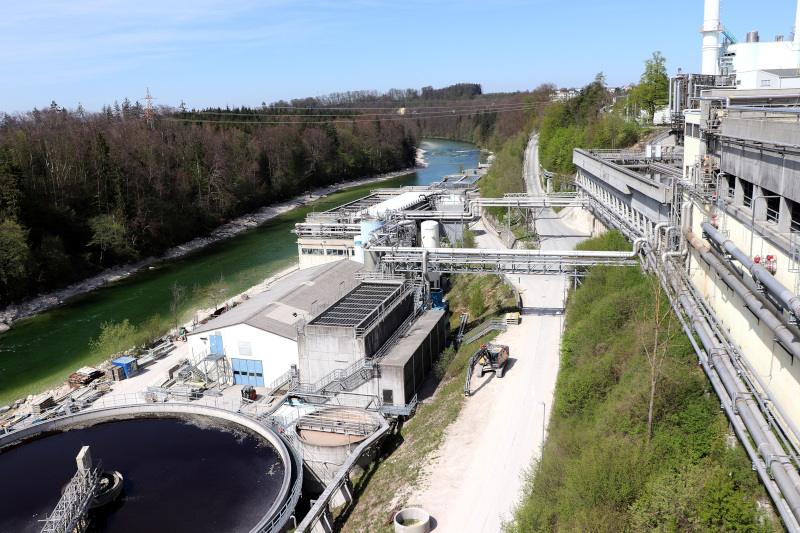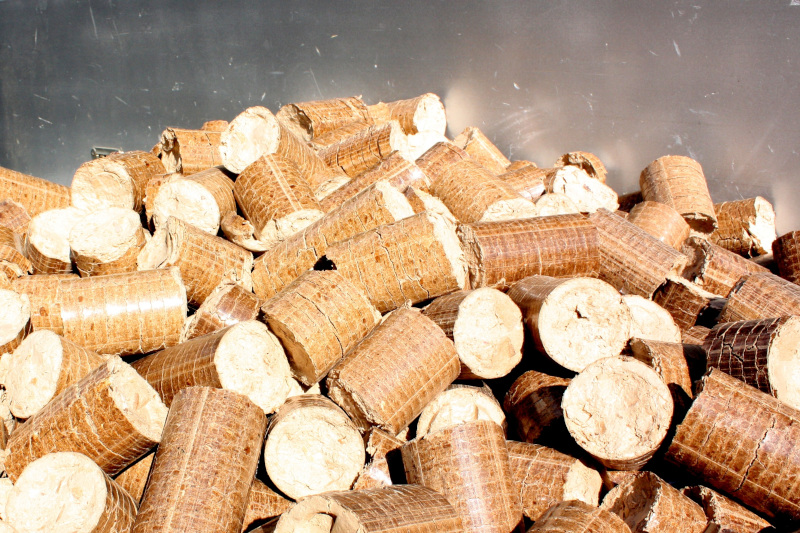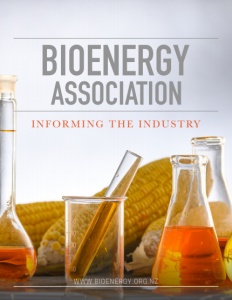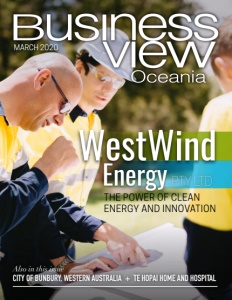Bioenergy Association
Informing the industry
Business View Oceania interviews Brian Cox, Executive Officer of the Bioenergy Association, for our focus on the Energy Sector in New Zealand and Australia
The Bioenergy Association provides assistance and a wealth of bioenergy information to support members’ businesses and promote their expertise and capabilities for undertaking activities in New Zealand, SE Asia, Australia and the Pacific with regards to bioenergy related solutions. Membership is open to anyone with a commercial interest in bioenergy and includes land and forestry owners, wood processors, feedstock suppliers, fuel and energy suppliers, equipment suppliers, manufacturers, consultants, contractors, energy researchers, educators, regulators and investors. The Bioenergy Association advocates to Government on bioenergy related policy, develops best practice Technical Guides for New Zealand and Australia, hosts workshops and webinars and assists potential investors in bioenergy based solutions to assess technologies, market opportunities and market risks. Three special topic interest groups promote the experience and capabilities of the Association’s members
A bold, broad mission drives the Association forward in a quickly evolving industry. Its goals include: Supporting members to build successful businesses based on bioenergy and biofuels; encouraging the use of New Zealand’s abundant biomass resources and providing renewable energy in the form of heat, electricity and transport fuels, sustainably and cost-effectively; promoting the environmental benefits of bioenergy, including greenhouse gas mitigation and waste avoidance, to the wider community; and facilitating implementation of commercial bioenergy projects that contribute to business resilience and regional economic benefits. Business View Oceania discussed the intriguing facets of the bioenergy industry with Brian Cox, Executive Officer of the Bioenergy Association and asked for his insights into the bioenergy renewables landscape of the future. The following is an edited transcript of our conversation.

BVO: How would you describe the overall makeup of the Association?
Cox: “Our formal name is Bioenergy Association of New Zealand but our operations are in New Zealand, Australia and the South Pacific. Our membership covers academics, equipment suppliers and practitioners in the field in terms of the whole value chain and policy makers. And we have a very close association with government agencies. The Association membership is not large; only about 110 members. But we have 2,300 followers. The ethic about that is that there are not a lot of players in the market here and many of them are very small. But there are a lot of people who are interested (I call them followers) and will be looking at how they use bioenergy solutions in their business. If they’re an academic or in terms of policy it’s not their full-time job so membership is not something for them but they are keen to have information on the market. New Zealand and Australia operates basically as a single market, in terms of standards and a range of different things. A lot of companies have an office in Sydney, which covers Australia, New Zealand and the South Pacific. Many of these young companies will be working more effectively in Australia because it’s a bigger market, so we just treat that as a single market across the board.
“The Association is split into three parts. We have a single association covering the gaseous, the liquid and the solid biofuels. There’s wood energy (principally in heat), there’s the processing of waste to make biogas and biofertilizer (used in electricity and heat or transport fuel), there’s liquid (a transport biofuel) and there are great overlaps between each of those three areas. But for operational reasons, most people working in one are not necessarily within the other, even though there’s an overlap in terms of outcomes. So, the advantage of having a single organisation with three parts is that we get the linkages between them. We have an Association website and three unbranded topical websites that are portals to information. We operate that way and it’s up to me to bring it into balance and support each one.”
BVO: Is one of those industry sectors more prevalent?
Cox: “In the last two years, there’s been quite a transformation. Up until then, it was mainly heat from wood fuels. No one was interested in using waste to make energy. It was the real poor cousin; the practitioners were constantly frustrated. Today, I will get more people attend a waste-to-energy activity than I would a process heat activity because process heat is fairly well established and access to information and demonstration is easily done by people themselves. Whereas with waste-to-energy, people are seeking information more. The transport biofuel sector is a top priority for our government but there has been no support for it. And yet nearly 60 percent of our fossil fuel use still comes from transport. So the government is changing that but the sources for biomass, for liquid biofuels, is principally from the wood products.
“We’re an unsubsidised market, so unlike the U.S. where the driver has been for farmers to grow soybeans and other crops which could be used as a feedstock, we are not in that situation. Here, the farmers have control over whether they’re going to do cattle or crops, according to their perception of the market. A landowner might be in forestry, see that market dropping and the market for milk increasing and booming, so they can pull the trees out and move to dairy. They don’t need permits provided they meet environmental standards for waterways and land erosion protection. And now there is a lot of government support for forestry because of carbon capture, and dairy is reaching a plateau, so they are planting trees on dairy farms.
“The circular economy waste-to-energy utilising the residues from your business is the topic I see as the priority one. While the players in the process heat area (such as a food manufacturer using coal or gas for fuel) have an impetus on moving from fossil fuels and may be considering biomass, the issue for them is really whether they’re in a location where the cost of the biomass makes it an economic proposition for them to do. That is mostly out of their control. Whereas in the circular economy areas, you might have a food processor with vegetable residues which they can use for their own energy onsite. They are controlling the feedstock as well as the end products that they can use themselves.”

BFO: What should businesses be focused on when considering bioenergy?
Cox: “I’m not selling the organisation, I’m really trying to say to people, “You have opportunities for your business which you should be thinking about – looking at the type of energy you’re using in your processes and whether there are alternatives like renewables. And looking at what you’re currently sending to landfill that could be used as an energy source. The waste-to-energy solution in the New Zealand and Australian market gets a lot more support because both governments are keen to reduce the waste going to landfill.
“There are also opportunities for businesses to hold hands, where they can get some economy of scale. For instance, say there are three businesses in an area that are all producing an organic waste. If they can come together and make a processing plant for that waste to make bioenergy, then it helps everyone. This is the sort of thing that CEOs should be considering – leading from the top and putting the pressure on the staff down below to find the answer to that question of why they are sending waste to the landfill. And make it work. Conceptually, the CEO and senior managers have the helicopter view of the business as a whole, whereas the various staff under them will be looking at their own little patch. They will be the technologists focusing on the boilers and the heat and the fuels and all the processes of the plant.”
BVO: What does the landscape look like for the industry over the next three to five years and how will your Association adapt?
Cox: “I think the speed of transition has picked up in the last year. In New Zealand, we now have a government that has targets in terms of the Paris Agreement and climate change. They’ve just passed a zero carbon act in that regard so those terms are legally required to be reached by 2050. We work closely with another organisation – Bioenergy Australia – they tend to be more an advocacy group to central government there. Whereas we’re more with individuals, whether they’re a member or non-member, and we focus on best practice, and distribution of information to practitioners, etc. in New Zealand and Australia. That collaboration works well.
“I send out a monthly newsletter to influence government and business decision makers, and the practitioners. Because it’s an emerging market, we’ve got to move them from thinking how they thought last year to how they should be thinking next year. It’s all about forward thinking. Many of the big engineering companies do what they did for the last 10 years because it’s low risk and they know what they’re doing. If you ask them to change, they say it’s high risk and they don’t know anything about it. Whereas a lot of the small companies, with three or four engineers who probably own the business themselves, are fleet of foot and doing things wonderfully.
“To sum it up, the Bioenergy Association is a facilitator and assistant to business and government to bring about the economic and wellbeing benefits that arise from utilisation of biobased materials – wood or waste. A year ago we stood on the bottom step of the ladder. I would now say we’re on step three of the ladder. Waste-to-energy is where there is a hunger for information and that’s where I see more potential in terms of activities that end barriers to progress.”
AT A GLANCE
Bioenergy Association
What: Represents members in the bioenergy industry in New Zealand and Australia
Where: Whangarei, New Zealand
Website: www.bioenergy.org.nz




 This information will never be shared to third parties
This information will never be shared to third parties